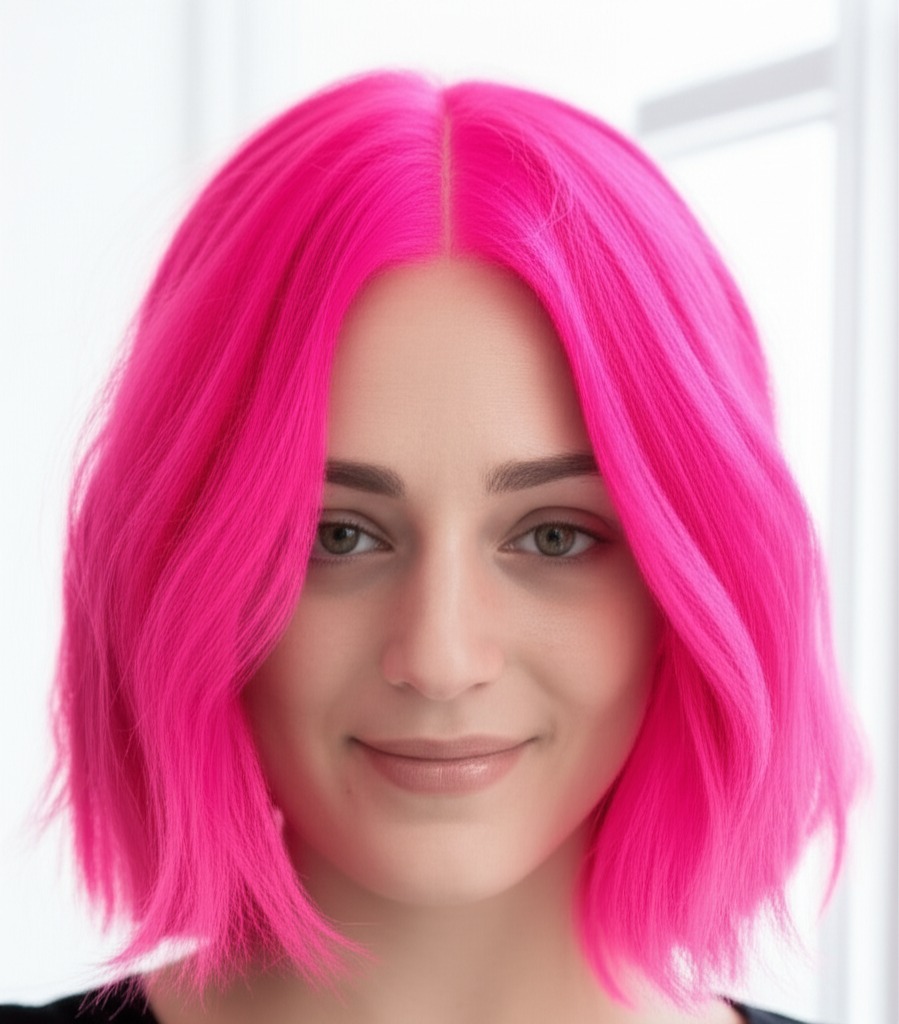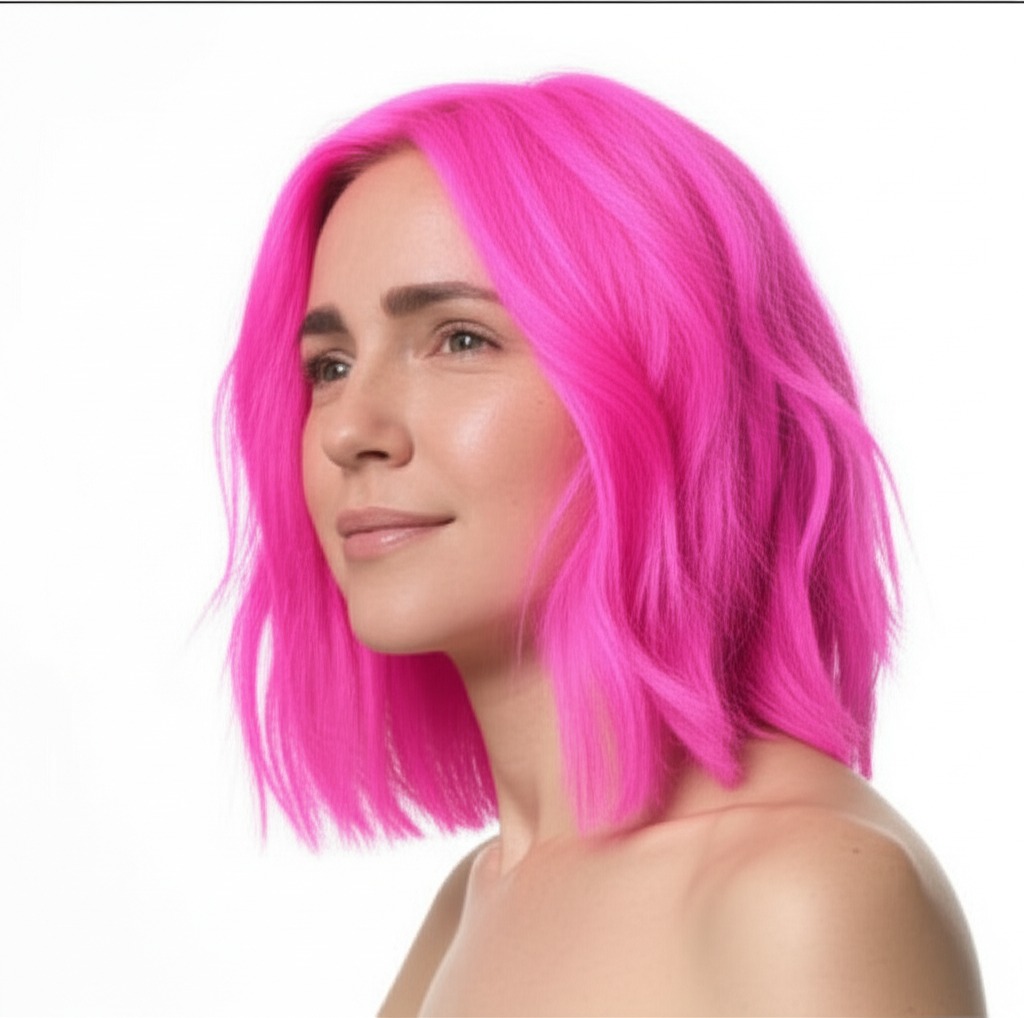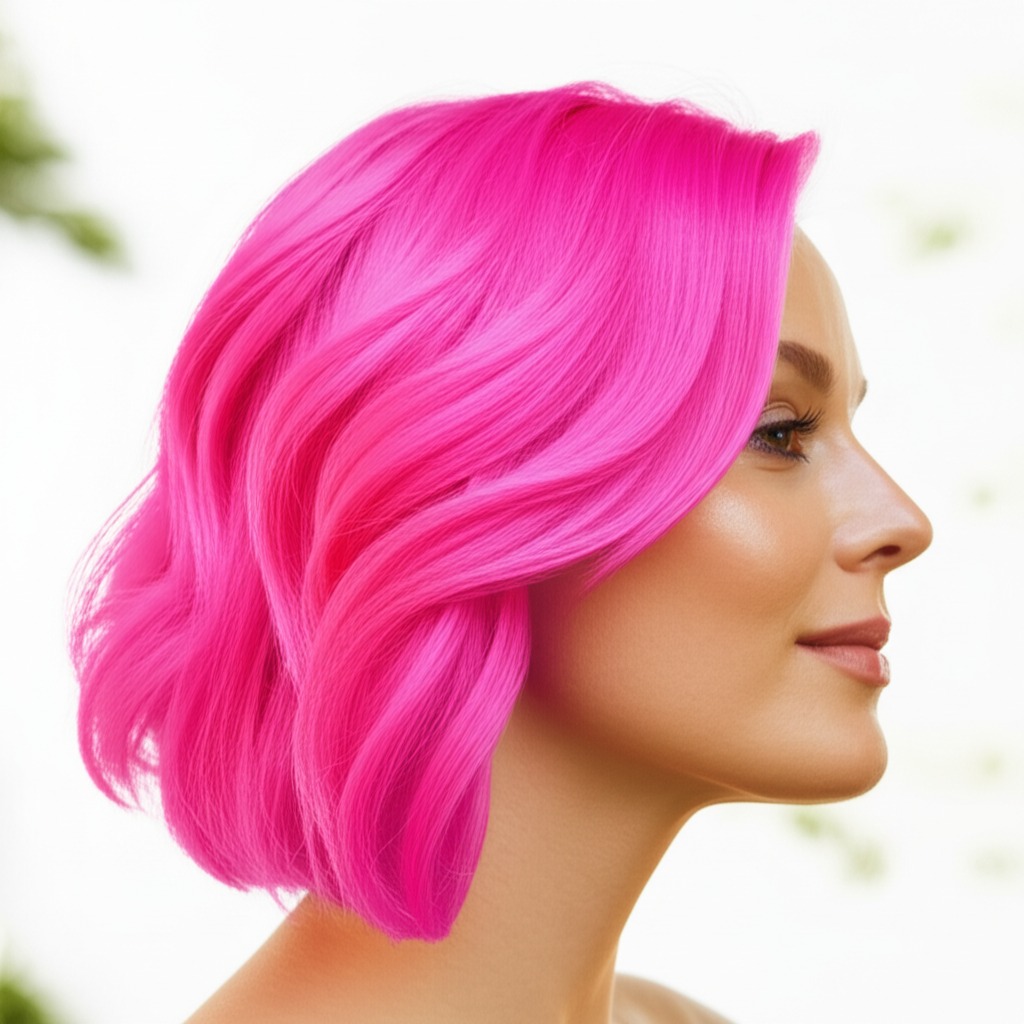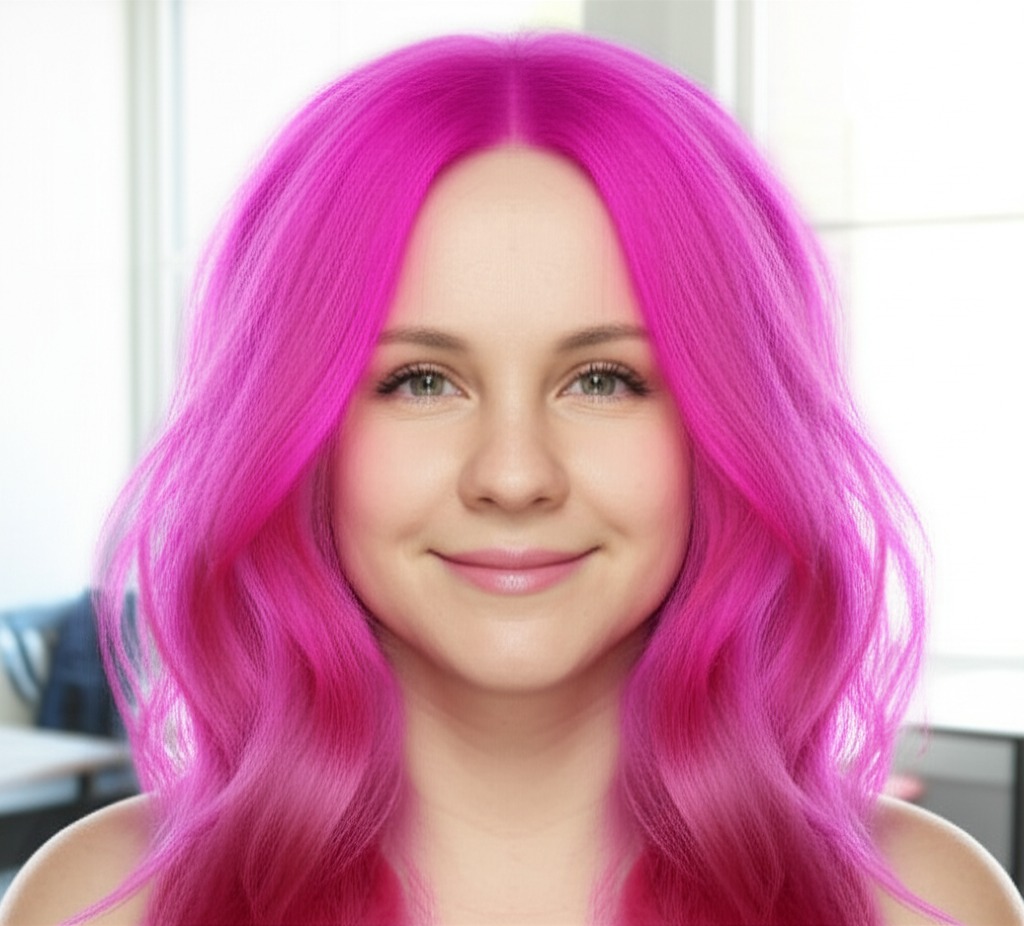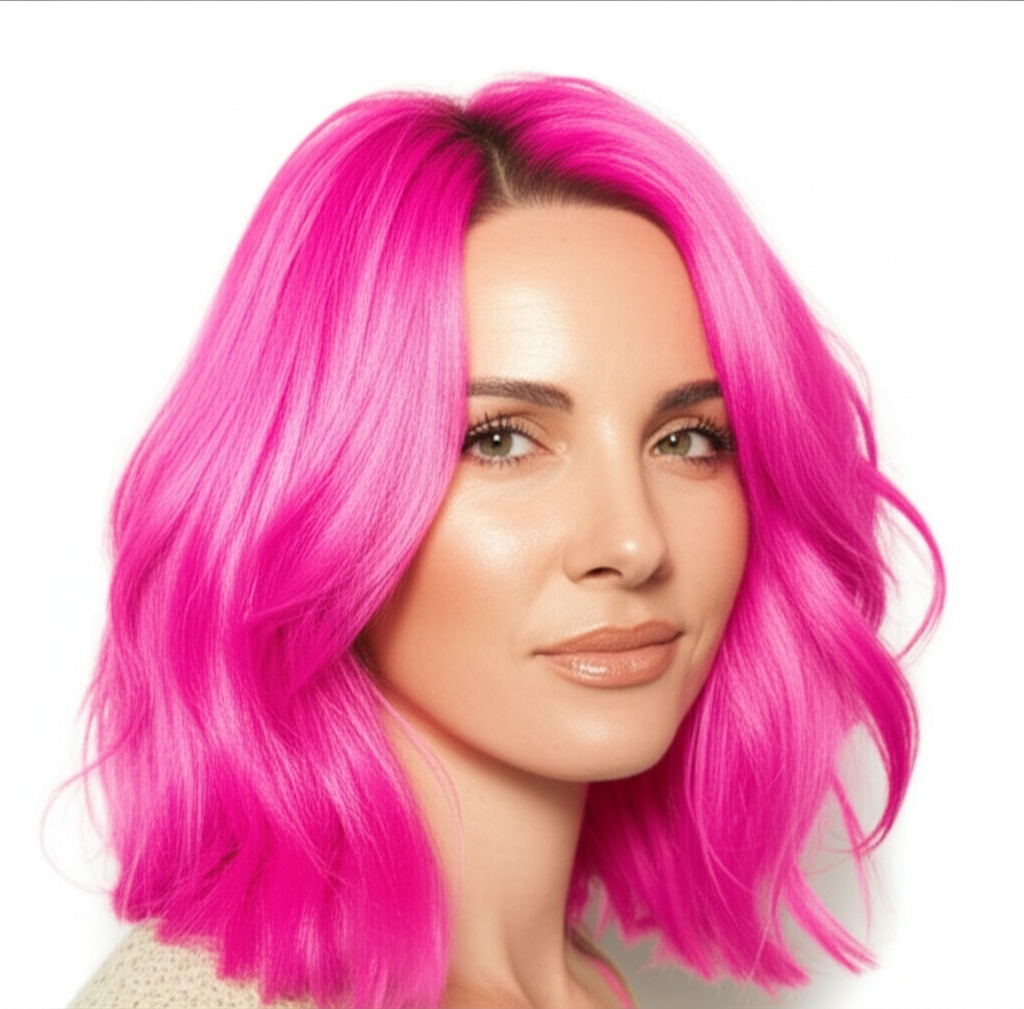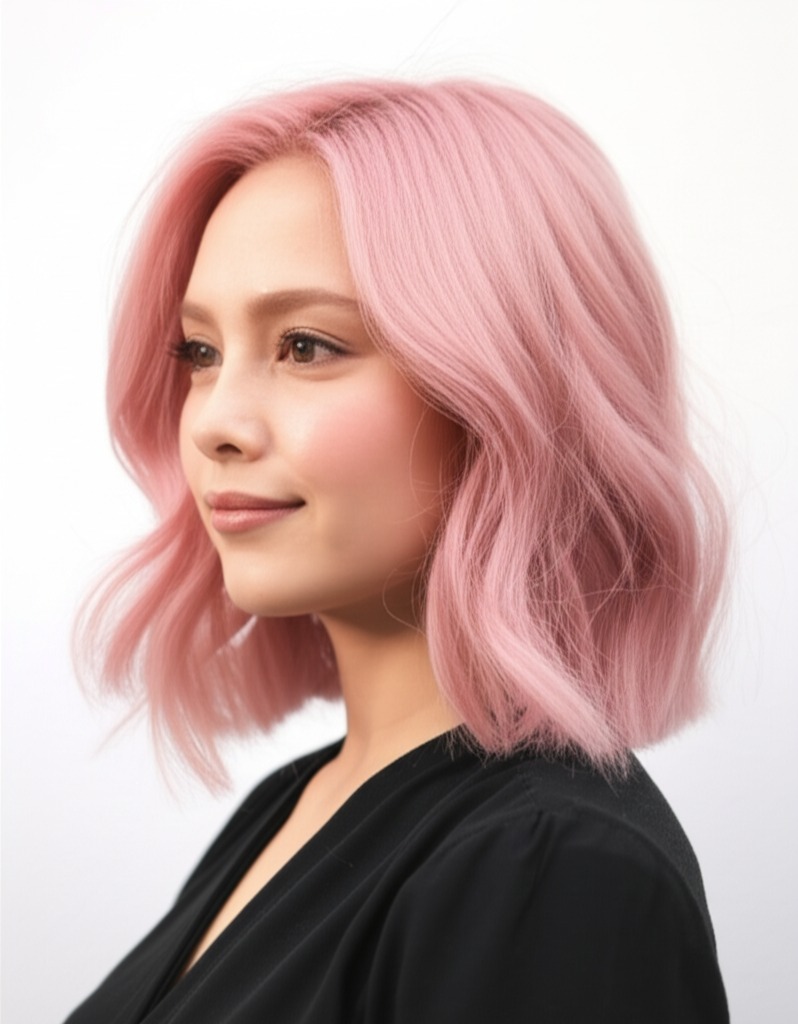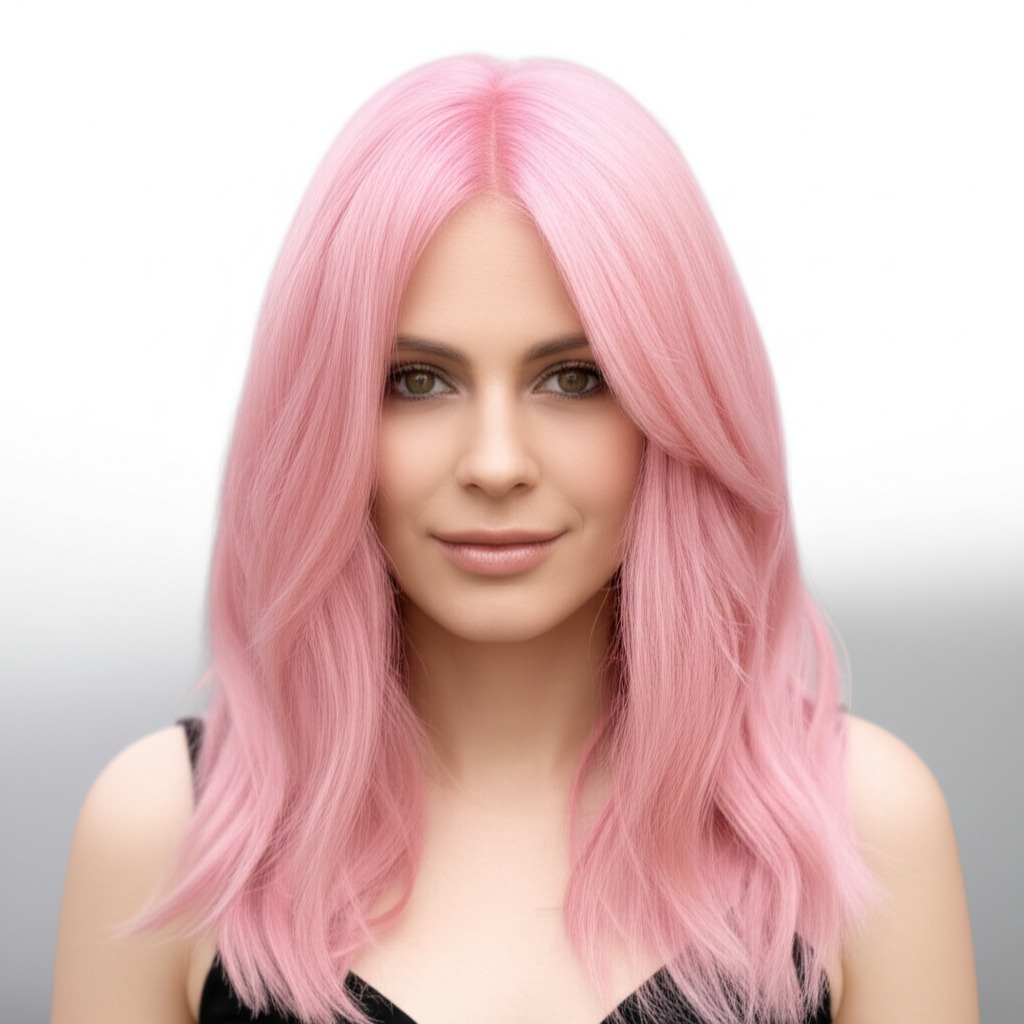#Dive into the Drama: Everything You Need to Know About Hot Pink Hair
Hot pink hair is the statement look right now – bold, playful, and undeniably eye-catching! But before you book that appointment (or reach for a box dye), let's break down everything you need to know about rocking this vibrant hue. This guide will cover shade nuances, who it suits best, how to achieve the look, and what to expect in terms of upkeep.
#1. Understanding Hot Pink: Shade Definition
Hot pink isn’t just pink. It's a specific family of shades with varying undertones and depths that significantly impact the final result.
- Undertone: Most "hot pink" leans towards a cool undertone, meaning it has blue or purple hints. This is what gives it that electric, vibrant pop. Warm pinks (with orange/red tones) exist but are less common and require different starting points to achieve the true “hot pink” look.
- Depth (Levels): Hair color levels range from 1 (black) to 10 (lightest blonde). Hot pink typically looks best on lighter bases, ideally level 8 or higher. The deeper your natural hair color, the more lifting (bleaching) will be required – and the more potential damage you're facing. The depth of the hot pink itself can also vary; a darker "hot pink" might appear more magenta, while a brighter one is almost neon.
#2. Who Does Hot Pink Flatter?
While confidence is key to rocking any bold color, some features naturally complement hot pink better than others:
- Skin Tone & Undertone:
- Cool Skin Tones (pink/red undertones): You're a natural! The cool tones in the pink will harmonize beautifully.
- Neutral Skin Tones: Can often pull it off, but be mindful of how the pink interacts with your skin’s warmth. A slightly cooler hot pink is generally more flattering.
- Warm Skin Tones (yellow/golden undertones): Can work! However, you'll need to ensure the pink is very cool and avoid anything leaning towards coral or orange-pink which can clash. A skilled stylist will adjust accordingly.
- Eye Colors: Hot pink looks incredible with:
- Blue Eyes: The contrast is striking and enhances their brightness.
- Green Eyes: Creates a vibrant, almost otherworldly effect.
- Brown Eyes: Can make brown eyes appear richer and more expressive.
- Natural Level Starting Points: As mentioned earlier, level 8 (a very light blonde) or higher is ideal. Levels 6-7 might be achievable with significant lifting, but consult a professional to assess damage risk. Darker levels are generally not recommended without extensive lightening which can compromise hair health.
#3. Technique Options: Achieving the Look
There's more than one way to wear hot pink!
- Single Process: The most straightforward approach – applying the color evenly from root to tip on pre-lightened hair. Best for a solid, bold look.
- Highlights/Lowlights: Adding pops of hot pink as highlights can create dimension and visual interest. Lowlights (darker shades) aren’t typically used with this vibrant hue but could be incorporated subtly for contrast if desired.
- Babylights: Very fine, delicate highlights that mimic the look of sun-kissed hair. Can soften the intensity of a full hot pink head.
- Gloss/Toner: Used after lightening to refine the shade and add shine. Crucial for achieving the precise hot pink tone you want and neutralizing unwanted brassiness (more on this later!).
- Balayage-Effect vs. Solid: Balayage creates a softer, more blended look with less harsh lines of demarcation. A solid application provides maximum impact and uniformity.
#4. Maintenance & Longevity: The Real Talk
Hot pink isn't wash-and-go! Be prepared for commitment.
- Wash Frequency: Aim to wash your hair only 2-3 times a week, using cool water (hot water fades color faster).
- Toner Refresh: Expect toner touch-ups every 4-6 weeks to maintain the vibrancy and correct any shifts in tone. This is essential.
- Root Growth Pacing: As your natural roots grow in, consider strategically placing hot pink highlights or a balayage effect to extend the time between full color applications.
- Budget/Time Planning: This isn't a budget-friendly or quick process! Expect salon visits every 4-6 weeks (including toner) and potentially multiple sessions initially to achieve the desired lightness. Factor in several hours for each appointment, especially if significant lightening is required.
#5. Seasonality & Pairing with Cuts: Style it Right
- Seasonal Tweaks: In summer, a brighter, more neon hot pink can be incredibly fun. For fall/winter, consider a slightly deeper, more muted magenta shade.
- Cut Pairings:
- Bob/Lob: A classic combination – the sharp lines of these cuts complement the boldness of hot pink.
- Long Layers: Creates movement and allows for showcasing different tones within the color.
- Pixie Cut: A fearless choice! The short length amplifies the impact of the vibrant hue.
- Event/Occasion Picks:
- Work: Proceed with caution! Consider a more muted shade or highlights, depending on your workplace's dress code.
- Daytime: A playful and fun option for casual outings.
- Evening: Absolutely stunning – the color will pop under party lights.
- Weddings: Can be a showstopper but ensure it aligns with the wedding’s overall vibe (and get approval from the couple!).
#6. At-Home Care: Protecting Your Investment
- Sulfate-Free Shampoo & Conditioner: Sulfates strip color, so switch to gentle, sulfate-free formulas.
- Clarifying Cadence: While sulfates are a no-no for regular use, occasional clarifying shampoos (every few months) can remove buildup and restore shine – follow with a deep conditioner.
- Heat Protection: Essential! Apply heat protectant before using any hot styling tools.
- Color-Safe Styling Tips: Avoid harsh chemicals in styling products. Consider air drying or low-heat styling whenever possible.
- Product Checklist: Sulfate-free shampoo, color-safe conditioner, deep conditioning mask, heat protectant spray, leave-in conditioner (optional).
#7. Common Pitfalls & How to Avoid Them
- Brassiness: The biggest enemy! Copper tones can creep in when lightening hair. A skilled stylist will use toners with purple or blue pigments to neutralize brassiness.
- Banding: Uneven color application, often caused by inconsistent lifting. Proper foil placement and technique are key.
- Patchiness: Can occur if the base isn't evenly lightened. Multiple sessions might be needed to achieve uniform coverage.
#8. Pros & Cons: Weighing Your Options
Pros:
- Head-Turning Style: Guaranteed to make a statement!
- Fun and Playful: Express your personality with confidence.
- Versatile (with the right techniques): Can be adapted for different looks and occasions.
Cons:
- High Maintenance: Requires frequent salon visits and specialized care.
- Fade Risk: Hot pink fades quickly, especially if not properly cared for.
- Potential Damage: Lightening hair can weaken it – prioritize hair health!
#9. Salon Consultation Script: Setting Expectations
Before you commit, have an open conversation with your stylist. Here are some prompts to guide the discussion:
- "I'm interested in hot pink hair. Can we discuss my natural level and how much lifting will be required?"
- “What’s your experience working with vibrant colors like this?”
- "Can you show me examples of different shades of hot pink to help me visualize what I want?"
- "How often would I need toner touch-ups?"
- "What at-home care products do you recommend for maintaining the color and health of my hair?"
- “Let’s discuss realistic timelines and costs associated with achieving this look.”
#10. FAQs: Hot Pink Hair Edition
- Can I dye my hair hot pink if it's already dark brown? It’s possible, but will require significant lightening which can be damaging. A consultation is essential to assess your hair's health and discuss alternatives like highlights or a balayage effect.
- How long does hot pink last in my hair? Typically 4-6 weeks before noticeable fading or color shift occurs. Toner refreshes are crucial for maintaining vibrancy.
- Will hot pink damage my hair? Lightening always causes some degree of damage. Proper care and conditioning can minimize it, but be prepared for potential dryness or breakage.
- Can I do this at home? While possible, achieving a professional-quality result is challenging without experience with lightening techniques and color theory. A salon visit is highly recommended.
- What if my hot pink turns orange/brassier? This indicates underlying warm tones are peeking through. A toner with blue or purple pigments will correct this.
- Can I go back to my natural hair color after having hot pink? Yes, but it may require multiple sessions of color correction and potentially a lot of patience!
Hot pink hair is an exciting transformation – embrace the boldness, prioritize your hair’s health, and enjoy the attention!

